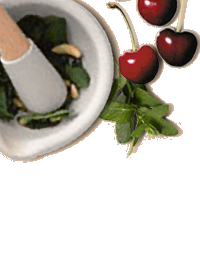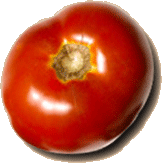Magnesium, the unloved supplement
April 9, 2015
Magnesium, the unloved supplement
Dear reader,
As you know from my previous messages, I believe our diet is our main ally to reduce our health dangers and cancer risks.
Countless natural compounds present in foods and spices have anti-cancer properties, and this is why it is so important to vary our diet, based on healthy and natural products.
You already know that an anti-cancer strategy should include omega-3 fatty acids, vitamin D, antioxidants, isoflavones, garlic, turmeric, cayenne and black pepper, coffee, red and black berries, nuts (walnuts, pecan, Brazil), some mushrooms (shiitake, maitake, Coriolus versicolor, and Schizophyllum commune).
But remember that, as mundane a mineral such as magnesium is, it is present in large amounts in green vegetables, avocados, almonds, sesame seeds, pumpkin and sunflower seeds, dark chocolate, walnuts, spirulina (blue algae) as well as buckwheat and should also be included into your anti-cancer strategy.
Magnesium: the supplement unloved by the medical establishment
Once we know magnesium’s benefits, we might be surprised to hear so little talk about it in the medical and hospital environment.
It is usually given to tired people who have cramps and extremities tingling when a magnesium deficiency is suspected.
But it’s like offering vitamin C only to people with scurvy, or water only to people dying of thirst.
More fuel cell thanks to magnesium
Cells that have their fill of magnesium are cells capable of producing their own sufficient levels of cell fuel (ATP = adenosyl triphosphate).
These are cells which:
– Contract and relax better – if they are muscle cells
– Produce more natural defenses – if they are immune cells
– Transmit intercellular messages better – if they are nerve cells, such as brain cells
– Repair damages better when caused by aging, pollution, oxidation, etc..
But that’s not the only benefit offered by magnesium.
Magnesium protects cells
Magnesium plays a major role in countless metabolic functions (i.e., functions that ensure the life of the organism).
It is found in 300 different enzymes in our body and can be fixed to 3,751 sites on human proteins. Enzymes are molecules that trigger chemical reactions. Proteins are the “bricks” that make up your muscles, your skin and your organs.
Magnesium plays an important role in our detoxification system and thus protects our cells against damage caused by environmental chemicals, heavy metals and other toxins.
The most powerful antioxidant produced by our body, glutathione, which plays a major role in detoxification especially in our liver, needs magnesium for its creation.
It is also useful to regulate sugar levels in our blood. It reduces the risk of type 2 diabetes – caused by the increased of sugar level in the blood created by a decrease in the cells’ sensitivity to insulin, or a depletion of pancreas cells responsible for the production of insulin. Poor glucose control and diabetes can greatly damage our body’s cells and promote cancerous tumors.
Magnesium can reduce the risk of colon cancer
It is then not surprising that through its protective effect, it was observed that people well supplied with magnesium also have lower rates of cancer.
A study published in the American Journal of Clinical Nutrition has shown that an increase of 100 mg of dietary magnesium intake was associated with a 12% decrease in the risk of colorectal cancer. [1]
I would like to mention in passing that, even if you think it has nothing to do with it, magnesium helps with constipation due to its laxative effects. I say this because many people who have constipation problems are being told to drink mineral water rich in magnesium (Badoit, Hépar, or Quezac). Finally, it’s an essential component of our skeleton.
Are you lacking magnesium?
Magnesium originally comes from the earth (soil), and we know that intensive forms of modern agriculture deplete the soil.
It is therefore likely that the foods you currently eat contain less magnesium than they used to contain 20 years ago.
But even if we watch our diet, some of us have a natural tendency to lack magnesium. Predisposing factors can be:
– Unhealthy kidneys, causing excessive loss of magnesium in the urine;
– Diabetes,especially when it’s poorly controlled, leads to magnesium losses in the urine;
– Age: elderly people are more likely have lower magnesium intestinal absorption;
– Drugs: diuretics,antibiotics and certain anti-cancer drugs can cause magnesium deficiency;
– A tendency to stress, or spasmophilia (undue tendency of some muscles to contract, caused by ionic imbalance in the blood, or associated with anxiety disorders). To eliminate stress hormones(cortisol, adrenaline) present in the blood following intense stress, our body uses minerals in tissues (muscles and bones), causing loss of minerals like calcium and magnesium that are eliminated in the urine.
– But magnesium being essential to control nervous tension and relax muscles, decreased magnesium levels lead to increased nervous tension. Thus a vicious circle is started and can lead to depression if we do not stop it.
– Thus, it is important to establish a comprehensive nutrition strategy, including taking a good source of vitamins and minerals supplements plus a rich,highly absorbable magnesium intake.
In America, 68% of American adults consume less magnesium than the recommended daily allowance (RDA) [2]
How to test your magnesium level
There is no current blood test that actually show us the magnesium content of our tissues.
Only about 1% of the magnesium in our body is in our blood. Our blood being rich or poor in magnesium (compared to the average) does not absolutely indicate whether our cells and tissues are high or low in magnesium.
It would take constant urine tests over a 24 hours period and compare these results with possible magnesium deficiency symptoms like cramps, rapid eyelids blinks, cardiac arrhythmia, epilepsy, loss of appetite, headache, nausea, and feeling run down to get an honest evaluation.
To the extent that excess magnesium are easily removed by the urine, there is no risk when starting a magnesium cure if we show some of the following withdrawal symptoms: morning fatigue, energy crashes, nervousness, anxiety, fast-blinking eyelids, muscle cramps, palpitations, sleep disorders, and heightened susceptibility to infections.
Be cautious though. As your kidneys filter your blood to produce urine, do not take magnesium supplementation for patients with severe renal impairment.
How to quickly compensate a magnesium deficiency
At the beginning of this message, I gave you the list of foods rich in magnesium. You should start by eating as much of these foods as you can first.
Magnesium-rich mineral water drinking is not an ideal solution. It is true that they show a high magnesium content, especially Badoit, Quezac, Hépar (110 mg per liter) or Rozana (160 mg). But this magnesium comes in the form of magnesium sulfate (inorganic magnesium) which is poorly absorbed, causing gas, bloating and possibly diarrhea.
Food-based, organic forms of magnesium are better assimilated by our body because this form of magnesium is linked to a food “carrier” that helps it cross the intestinal wall. Once through, they have a better chance to penetrate our cells. That’s why they are said to have better “bioavailability” than the mineral magnesium.
Magnesium gluconate has better bioavailability but magnesium malate, citrate, and glycerophosphate threonate are also assimilated very well and do not cause diarrhea.
Caution: these different magnesium salts contain a variable percentage of elemental magnesium: 5.4% for gluconate, 6.6% for glycerophosphate, 8.7% for pidolate, and 16.2% for magnesium citrate.
Now, what’s important for you to know is what your daily dose of elemental magnesium should be: 330 mg per day for women and 420 mg for a man. You should therefore adjust the amount of magnesium salts necessary to achieve these levels.
Why don’t we hear more often about the preventive and curative properties of natural substances?
The preventive and healing powers of food products such as vegetables, spices, fungi, algae, and minerals such as magnesium have been researched a considerable number of times and have been known for a long time by people who are interested in this subject.
Yet these studies remain surprisingly obscured, unknown and neglected by the general public, when compared to chemical drugs.
It’s a fact that modern drugstores offer us a wide range of chemical pharmaceutical drugs and make them visible at all street corners and shopping malls. The appellation, “natural products” that are sold there in increasing volumes, seem to justify the transformation of drugstores into mini-supermarket as they are the result of overreaching marketing.
It can be seen in the care taken in the packaging, forms and colors of a multitude of cans, jars, tubes, aerosol cans, sprays, and waters, some of them even fruit-flavored. Or you can see them illustrated with thighs, bellies, breasts and buttocks, always perfectly curved and impeccably tanned, which makes you lose your head and don’t know where to turn when you walk in. Hint, it’s designed that way to attract and confuse us.
Americans invented this way of marketing health products. When we enter a grocery store, we are “guided” through endless aisles of products which we would never have thought of buying, are saturated with advertising come-ons, before we get to the products we really want (bread, eggs, produce) and finally, we get to the cash register – which is overflowing with candies, chewing gum, gaudy magazines, batteries and all sorts of gadgets in small packages, all seemingly cheap but not really. They make is easy for us to grab them and add them to our shopping cart (it’s called impulse buying)… and add to your final bill.
Hey y’all, watch out! This is what’s also happening to our drugstores.
Nowadays, to access the pharmacy counter, we must walk through an increasing amount of aisles whose shelves are overloaded with beauty creams, pacifiers, baby lotions, massage oils, nail polish, energy drinks, exciting lozenges, throat candies, all allegedly “sugar free” and supposedly good for our health but packed in layers of shiny and colorful cardboard, plastic, and aluminum packaging, all decorated with suggestive posters and of course the inevitable “special offers” (30% off, 50% off, 2 for the price of one, etc.) ad nauseam, the same overused tricks used at your local supermarket.
The old-fashioned pharmacist with beard and glasses has been replaced by a charming saleswoman with multi-colored nails, wearing a white blouse opened just the right amount to tease the eye, pouty lips and all the more motivated to “educate” us about the latest skin cream or perfume so she can receive her sales commission – if you let them get away with it.
On the other hand, mum’s the word on the adverse effects of the drugs they are selling us. They’re leave it to us to read the long list of tiny printed warnings on the neatly folded leaflet in twelve languages, only after we paid for it and are safely (for them) home.
This is how the fortune of the pharmaceutical industry’s fortune was made. It’s in the process of “diversifying” full speed in this sector, as if the revenue it achieves in pharmaceutical products was not large enough.
All of this explains why most people like you who are reading this article may be more familiar with chemotherapy and chemical drugs than they are with the world of food supplements and natural anti-cancer products that can be bought easily with a single click on any perfectly reliable websites, offering products delivered at home within 48 hours, first class delivery. It’s more profitable for them.
For them, the domain of natural treatments that receive, typically, no media attention unless it’s to criticize them and warn the public about it’s possible dangers, is an uncertain, mysterious, even obscure world filled with unknown dangers!
Of course, this is gradually changing, thanks in part to people like me.
It’s hard work but someone’s got to do it, right? That’s why I’m here for.
Finally, I wish you good health! And don’t forget to relay my message to people around you about the benefits of fresh foods loaded with magnesium (or magnesium supplements) to prevent fatigue, reduce their risk of cardiovascular disease, depression, cancer … if they dare take their health in their own hands.
A Votre Sante – To Your Health
Alain Braux
Culinary Nutritionist
Sources:
[1] Magnesium intake and colorectal tumor risk: a case-control study and meta-analysis
[2] Dietary magnesium and C-reactive protein levels.









leave a comment